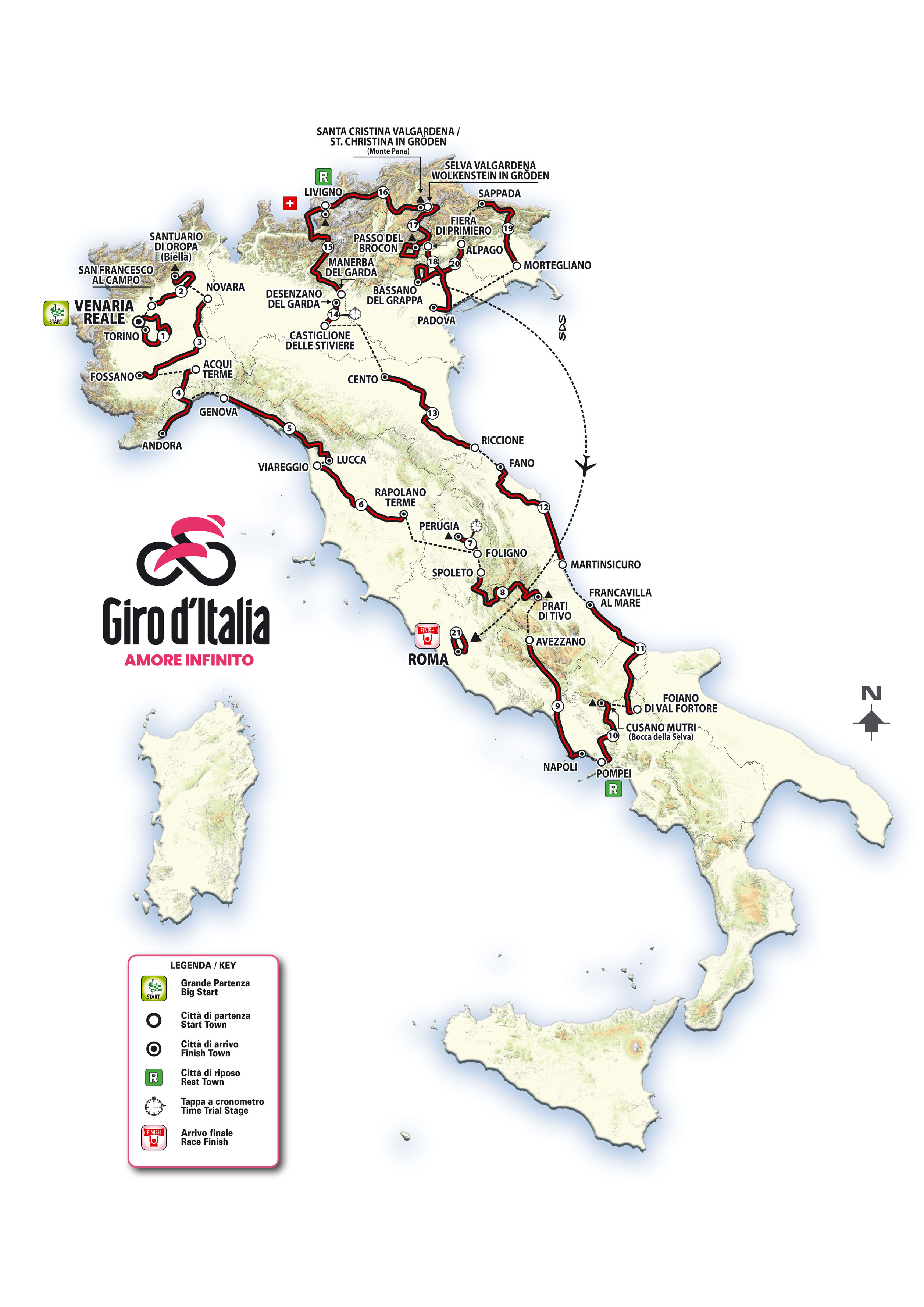The route of the 107th Giro d’Italia, running from 4 to 26 May 2024, was presented at the Teatro Sociale of Trento, during the days of Il Festival of Sport. The Event, presented by Cristina Fantoni and Nino Morici, was attended by many well-known faces in sport, entertainment, institutions and companies, all of whom are part of the great Giro d’Italia family. The winner of the last Giro d’Italia, Primož Roglič, Filippo Ganna, Jai Hindley and three-time World Champion, Peter Sagan, as well as a great rider who has made the history of the Corsa Rosa, Vincenzo Nibali, also spoke on the stage. To unveil the Trophy and talk about the Giro d’Italia Women two cycling champions as Elisa Longo Borghini and Letizia Paternoster. Among the institutions also present were Francesco Lollobrigida, Minister of Agriculture, Food Sovereignty and Forestry, and Cordiano Dagnoni, President of the Italian Cycling Federation.
Doing the honours were the President of RCS Mediagroup, Urbano Cairo, the Managing Director at RCS Sport, Paolo Bellino, the Director of the Giro d’Italia, Mauro Vegni, and the Director of La Gazzetta dello Sport, Stefano Barigelli.
Grande Partenza
It starts with two unusual stages already full of climbs that will force the captains and ‘favourites’ to be already in good condition, although they are not such as to generate excessive gaps.
The 136-kilometre Venaria Reale-Torino is a lightened re-edition of the “mountain stage in the city”. After an initial approach through the hills of Turin, it approaches Superga from a less-travelled side on the day of the 75th anniversary of the Grande Torino tragedy. After passing the finish line for the first time, it will climb Colle Maddalena from the Eremo side to finish on the traditional finish line in front of the Gran Madre.
Twenty-four hours later we will start from Canavese (San Francesco al Campo) and riding through the hills of Biella to arrive at the final climb of Oropa (150 km) where in 1999 Marco Pantani achieved one of his most iconic victories by remounting 49 cyclists after a mechanical problem and winning the stage.
The third stage offers a potential bunch sprint (Novara-Fossano 165 km), but the sprinters will have to earn it since the precedent of a GranPiemonte (2009) shows how a single attacker, that time Philippe Gilbert, can overturn the prediction and arrive alone.



































































